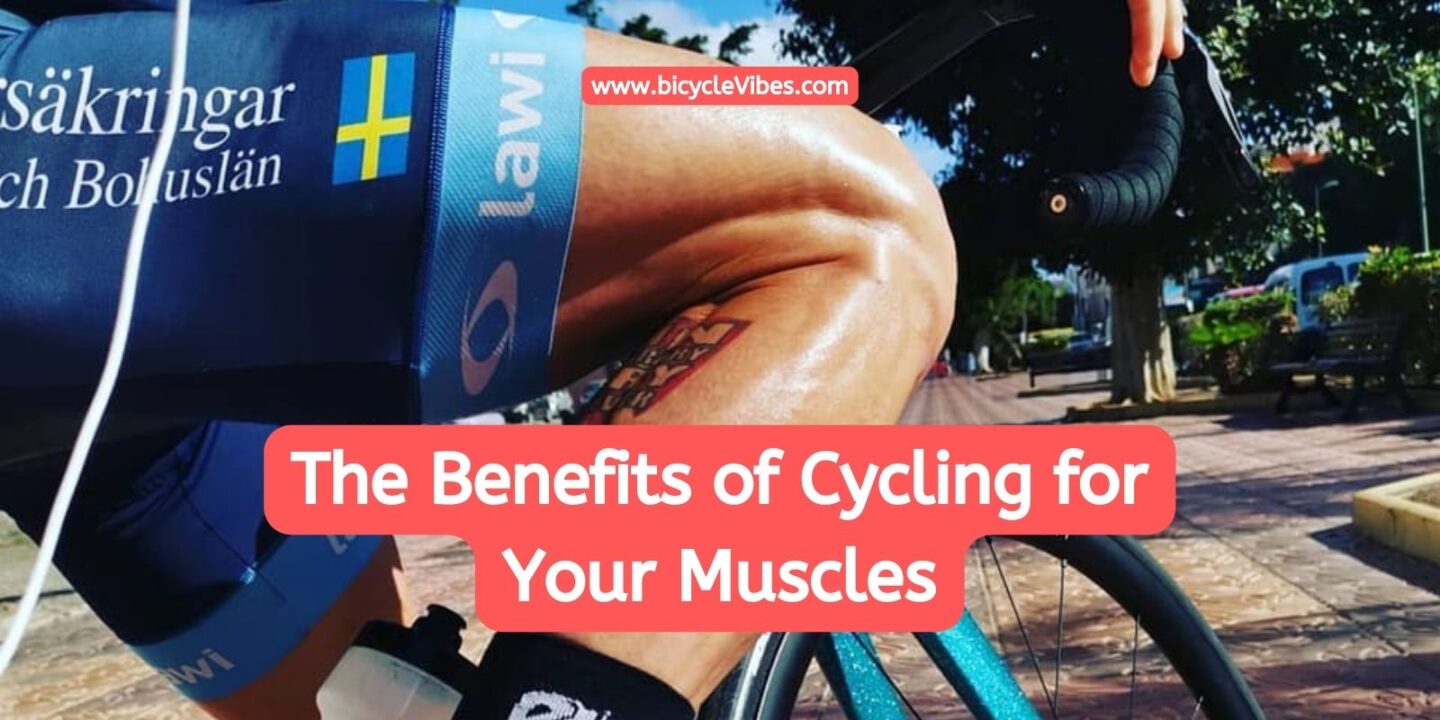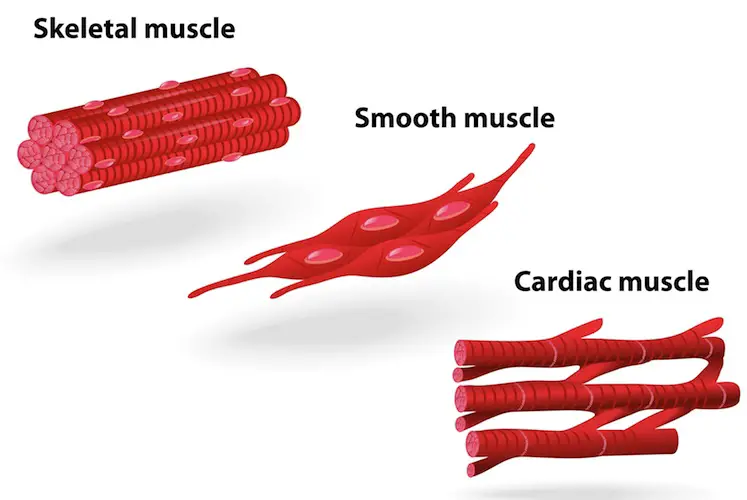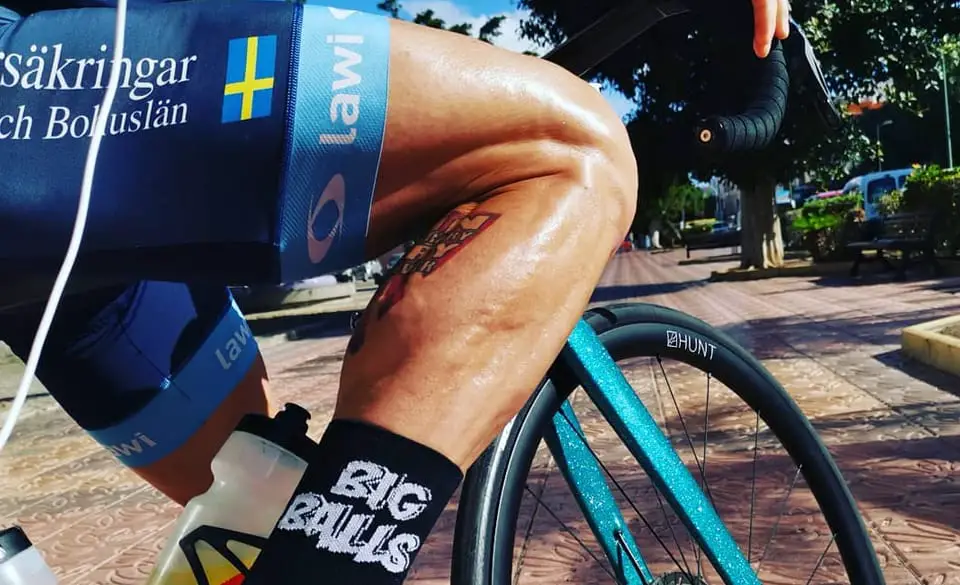
Cycling does more than just give your legs a nice appearance. It actively maintains, strengthens, and develops your muscles, providing a wide range of health benefits.
Our muscles are the essential components that enable us to engage in physical activities such as cycling, walking, jumping, running, swimming, and climbing. They play a central role in all forms of physical exercise, serving as the driving force behind our movements and vital functions. Without our 649 muscles, life itself would be impossible, starting with the crucial function of our heart.
The heart, propelled by the power of our muscles, pumps blood through our network of arteries and veins, ensuring the delivery of oxygen and vital nutrients to every cell in our body. Additionally, specific muscles like the diaphragm facilitate our breathing process, allowing us to draw air into our lungs. Other muscles aid in functions such as swallowing and moving food through the digestive tract by contracting the muscles in the digestive tract’s walls.
Skeletal muscles, which are connected to our skeleton, provide us with the ability to move, speak, breathe, and eat. Beyond their direct influence on movement, muscles also interact with various organs, contributing to overall health. They play a role in preserving autonomy as we age, strengthening the immune system, preventing obesity, hypertension, cancer recurrence, and musculoskeletal disorders. Furthermore, they have the potential to delay the onset of degenerative diseases like Parkinson’s and Alzheimer’s.

Table of Contents
The impact of cycling on muscles
When you pedal, every muscle group in your body actively engages—your back, abs, buttocks, thighs, calves, pectorals, and arms. This simultaneous effort involves various muscle fibers that undergo structural and functional changes based on the intensity and duration of your exertion. These adaptations enable the muscles to better adapt to the demands placed upon them

Two types of muscle fiber exist: fast fibers and slow fibers. Fast fibers contract rapidly but only for a limited number of repetitions. Conversely, slow fibers can contract more frequently, allowing for longer exercise sessions.
Once your muscles receive nerve impulses from the brain, they respond by contracting and improving their typology, size, and number of muscle fibers. This process ensures they can effectively meet the required force. The demands placed on muscle fibers vary depending on factors such as the activity level (low, moderate, intense), the session’s nature (strength, resistance, explosiveness), and the execution style. Sprinting recruits different fibers (fast fibers) with distinct functional characteristics compared to those used during extended rides.
You may like also: Which Muscles Do You Use When Cycling?
4 actions in muscle building and definition
Muscle Hypertrophy: Muscles undergo hypertrophy, increasing the size of muscle fibers when exposed to higher-than-usual workloads. This adaptation empowers them to generate greater strength and endurance. (Read this book available on Amazon)
Muscular Endurance: Prolonged aerobic stress leads to adaptations in muscles, enhancing their ability to generate tension and sustain contractions without fatigue. Improved vascularization and mitochondrial density play crucial roles in this process, as mitochondria are responsible for producing energy (ATP). (Read this book available on Amazon)
Muscle Coordination: Repetitive movements trigger adaptations in muscles, enhancing coordination and synchronization of muscle actions. Consequently, they operate more efficiently, resulting in increased strength. (Read this book available on Amazon)
Muscle Recovery: Regular training enables muscles to adapt and recover faster after physical exertion, facilitating more frequent practice and improved performance. (Read this book available on Amazon)
The Optimal Combination: To foster strength and muscle quality, a combination of endurance and resistance exercises proves highly effective.
6 health benefits for a toned body

Whether you’re a regular or occasional cyclist, cycling offers numerous benefits beyond just shaping your legs.
It actively tones your body, helping muscles regain their shape and strength, leading to proper alignment, joint protection, and better posture in your daily life.
Moreover, cycling aids in burning more calories even at rest. As you build muscle mass, your body’s basal metabolic rate increases, resulting in more calorie burn—an essential aspect of weight control and loss.
Additionally, cycling contributes to preventing joint pain. Strengthened muscles play a pivotal role in supporting your skeleton and joints, offering enhanced stability to your pelvis, knees, and ankles, ultimately improving overall posture.
Furthermore, cycling promotes venous return, as pedaling stimulates leg muscle contraction, enhancing blood flow through the veins concentrated in this region.
Another significant advantage of cycling is its positive impact on mental health. By gaining control over your body, you experience a sense of empowerment, leading to improved self-confidence and belief in your capabilities.
Notably, cycling increases your energy levels. The improved physical fitness and mental well-being resulting from being toned provide you with a surplus of energy for your everyday activities.
Cycling is beneficial for your health in both the short and long term.
Related Q&A

How does cycling benefit your muscles?
Cycling engages various muscle groups, promoting strength and endurance.
What muscle groups does cycling target?
Cycling primarily targets the legs, including quadriceps, hamstrings, and calves.
Does cycling build muscle mass?
Yes, cycling can build muscle mass, especially when combined with resistance training.
How does cycling improve muscle flexibility?
Regular cycling enhances muscle flexibility by promoting a full range of motion.
Are there any benefits for upper body muscles?
Cycling also engages the upper body muscles, like the arms and shoulders, to a lesser extent.
Can cycling help with muscle toning?
Yes, cycling can tone muscles, giving them a more defined appearance.
What role do transition words play in explaining muscle benefits?
Transition words aid in organizing ideas, making it easier to comprehend the advantages of cycling.
How does cycling compare to other forms of exercise for muscles?
Cycling provides low-impact exercise that benefits muscles without excessive strain on joints.
What benefits does cycling offer over stationary workouts?
Unlike stationary workouts, cycling allows you to explore the outdoors while working your muscles.
How can beginners start incorporating cycling into their fitness routine?
Beginners should start with shorter rides and gradually increase intensity and duration for optimal muscle benefits.









One reply on “The Benefits of Cycling for Your Muscles”
[…] You may like also to read: The Benefits of Cycling for Your Muscles […]